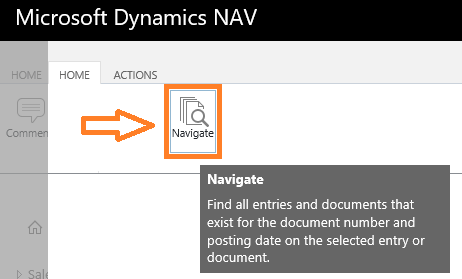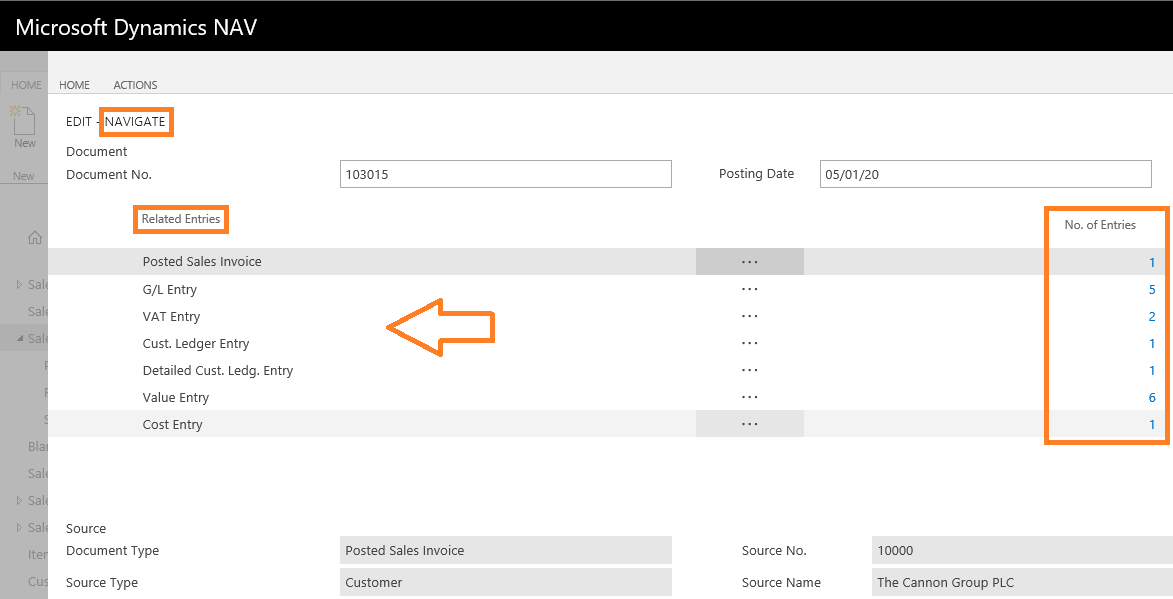Chapter 3. General Considerations
Knowing the Microsoft Dynamics NAV philosophy of how things are done is an important aspect of successfully implementing Microsoft Dynamics NAV for any organization.
This is also important for users and people working in a company that uses, or will use, Microsoft Dynamics NAV as their ERP. They have to know how to do their job in Microsoft Dynamics NAV and be especially aware of the consequences of what they do.
Everyone involved in implementation needs to fully understand the way Microsoft Dynamics NAV works; not only because they are the people responsible for transmitting that knowledge to users, but also because they will most likely be designing and developing new functionalities and modifying existing ones. Therefore, it is important to use the same philosophy Microsoft Dynamics NAV uses in all of its standard functionalities. Breaking away from the core philosophies of Microsoft Dynamics NAV will confuse end users.
In this chapter, we will cover the...
If you have never worked with Microsoft Dynamics NAV before and have only started started playing around with it, there are a few words you will see over and over again, including setup, journal, posting group, post, document, entry, dimension, among others. You may not have a clue what all of these mean or what they are used for, but don't worry—we will explain it all!
Microsoft Dynamics NAV is structured into different functional areas, namely, financial management, sales and marketing, purchase, warehouse, manufacturing, jobs, resource planning, service, and human resources.
Each of the functional areas has its own setup, where the behavior of each of the areas is defined. A general setup also exists in the Administration menu.
As discussed earlier, Microsoft Dynamics 365 Business Central is the evolution of Microsoft Dynamics NAV and, to date, it maintains the same features of Microsoft Dynamics NAV 2018. It is used only with a Web client, which makes it slightly different...
Microsoft Dynamics NAV does not have any kind of save button anywhere in the application. So, data is saved into the database as soon as the user leaves a field.
Likewise, a record is inserted in its table right after the field (or fields) of the primary key. Some pages, such as Sales Line and the different journals have the DelayedInsert property set to Yes, which means that the record won't be inserted until the user moves the cursor to the next line or the next record.
The major advantage is that users can create any card (for instance, Customer Card), any document (for instance, Sales Order), or any other kind of data without knowing all of the information that is needed. Let's explain this with an example.
A new customer has to be inserted into the database. For Microsoft Dynamics NAV, it is mandatory to fill in some information to actually be able to post any transaction with the customer. The mandatory fields are Gen. Bus. Posting Group and Customer Posting Group:
As you...
Microsoft Dynamics NAV has a big keyword (among others), called Post. If you read the word Post anywhere in an application or see the following icon, it means that, if you click on the button, a routine will be run and this will lead to posted documents and posted entries that are on their last stage; it is trusted data that won't change anymore. This is important for many IT and accounting audits:
As explained in The data model section of this chapter, Microsoft Dynamics NAV has some tables called Entries (G/L Entries, Cust. Ledger Entries, Vendor Ledger Entries, Item Ledger Entries, and so on) that correspond to transactions related to master data. The only way to insert data into entry tables is through the posting routines. Numerous validations are carried out during posting routines, as the system has to check whether all of the data is correct and that no inconsistencies exist.
One unique posting process usually creates multiple entries, and all of the entries are...
Navigating through your data
In Microsoft Dynamics NAV, it is extremely easy to navigate through data, remove default filters set by the system, and set your own filters to find or analyze your own data.
The Navigate functionality
You have probably seen the following Navigatebutton in many places in Microsoft Dynamics NAV:
You can actually see it on every single page that shows posted transactions, either in Posted Documents and/or in ledger entry pages.
When you click on the Navigate button, a page will be displayed, magically showing all of the posted documents and entries related to the record from where you hit the Navigate button. This means that, if you are ever wondering which transactions are related to an entry, Microsoft Dynamics NAV will do the hard work for you and find anything related to that particular document number.
Earlier in this chapter, we created and posted a Sales Invoice. If we open Posted Sales Invoice and hit Navigate, the following navigation page will be opened:
The...
Real-time data gathering – SIFT technology
Sum IndexField Technology (SIFT) is a built-in technology that exists in Microsoft Dynamics NAV and is used for totaling. It seems that Microsoft bought Navision for FlowFields, which are considered to be a brilliant feature.
In other ERP systems, totals, subtotals, and balances are calculated and stored somewhere. This calculation has to be redone over and over so that numbers are up-to-date.
In Microsoft Dynamics NAV, if you're a developer, you don't have to worry about calculating subtotals, as it can be done through SIFT. Creating a new Subtotals field is as easy as indicating in the field properties that it is FlowField and specifying the formula in the field. After this, you will not have to worry about keeping it up-to-date.
As a user, you know that the balances for your G/L accounts, customers, vendors, and bank accounts always display real-time information, similar to the other calculations done using SIFT. A few examples are the quantity...
Everything leads to accounting
Accounting rules teach you how to translate everything that happens in a company into accounting language, that is, debits and credits.
Microsoft Dynamics NAV implemens these rules using posting groups, so the system can translate everything into the accounting language and post it to general ledger entries on the fly. Posting groups are related to master data. When you create a new record in the master data (for instance, you create a new customer), you need to specify which posting group it belongs to:
In the previous screenshot, you can see the existing posting groups for customers. For each posting group, all of the columns are filled with an account value. Microsoft Dynamics NAV uses these accounts to post general ledger entries any time a transaction is carried out with a customer.
You can create as many posting groups as the amount of detailed information you need. In Europe, for example, you have to separate domestic customers, customers from the European...
The Date Compression toolkit
If your database is too large—you have too many historical data and some tables with millions of records—it is possible in Microsoft Dynamics NAV to use some tools dedicated to data compression (the Date Compression feature).
Microsoft Dynamics NAV does not have a real data archive procedure, but it is possible to use these tools to optimize databases and tables. These tools delete data only after having created historical data that represents them; you can use data filters to achieve this. It can be useful to use data filters if you have been using Microsoft Dynamics NAV for several years with very large databases.
What are these tools?
There are several, and with different functional modes. I'll list a few, but note that these features are not actually available on the Web client; only in the Windows client. It will be necessary to understand if they are to be inserted successively:
These tools are also available in the Windows client of Microsoft Dynamics 365...
The Microsoft Dynamics NAV and Microsoft Dynamics 365 Business Central database
Microsoft Dynamics NAV 2018 stores its data in a Microsoft SQL Server database or a Microsoft Azure SQL database. Microsoft Dynamics NAV 2009 and earlier versions of Microsoft Dynamics NAV used either a Microsoft SQL database or a native database for Microsoft Dynamics NAV. The native database has been discontinued and is no longer available.
Now let's talk about the databases for Microsoft Dynamics 365 Business Central. Microsoft Dynamics 365 Business Central SaaS is only deployed using Microsoft Azure SQL databases for both tenant and application databases. The on-premise fall 2018 update release for Microsoft Dynamics 365 Business Central will have the same database version support it currently has Microsoft Dynamics NAV 2018. Therefore, it will support Microsoft SQL Server—whether on-premises, virtualized, or hosted in Azure IaaS—and Microsoft Azure SQL Database.
The database topology used by Microsoft Dynamics...
Microsoft Dynamics 365 Business Central – why upgrade to or adopt it?
Why upgrade to or buy Microsoft Dynamics 365 Business Central? There are several reasons, which I will try to list in the following.
Certainly, today, it is impossible not to have a product in the cloud; although there is still a hard core of on-premise installations (and Microsoft Dynamics 365 Business Central will also be maintained in on-premise format), the cloud is the present and Microsoft is investing a lot in it.
As a cloud-first product, Microsoft Dynamics 365 Business Central will be seeing frequent updates from Microsoft, a notable difference from the typical Microsoft Dynamics NAV solution ownership experience of the past. Microsoft Dynamics 365 Business Central's emphasis on newness comes with many strengths, but also drawbacks. I will offer a short comparison of the strengths and limitations of Microsoft Dynamics 365 Business Central, compared with Microsoft Dynamics NAV 2018.
History of Microsoft Dynamics...
In this chapter, we looked at general considerations for Microsoft Dynamics NAV and Microsoft Dynamics 365 Business Central, and learned their philosophies. It is important for everybody to learn to work together, since every part of Microsoft Dynamics NAV and Microsoft Dynamics 365 Business Central is tied together in one way or another. The implementation of these systems could be used to re-engineer a company's processes. Applications aside, implementing Microsoft Dynamics NAV and Microsoft Dynamics 365 Business Central will give your employees an opportunity to understand exactly how your company operations work, resulting in more productivity.
So far, we have introduced Microsoft Dynamics NAV 2018, in Chapter 1, Exploring Dynamics NAV and MSDYN365BC – Overview; we talked about the new features that the current version has introduced in Chapter 2, Microsoft Dynamics NAV 2018 - An Overview; and we have now talked about the general philosophy of Microsoft Dynamics NAV.
In the coming...


















































































